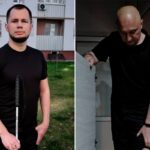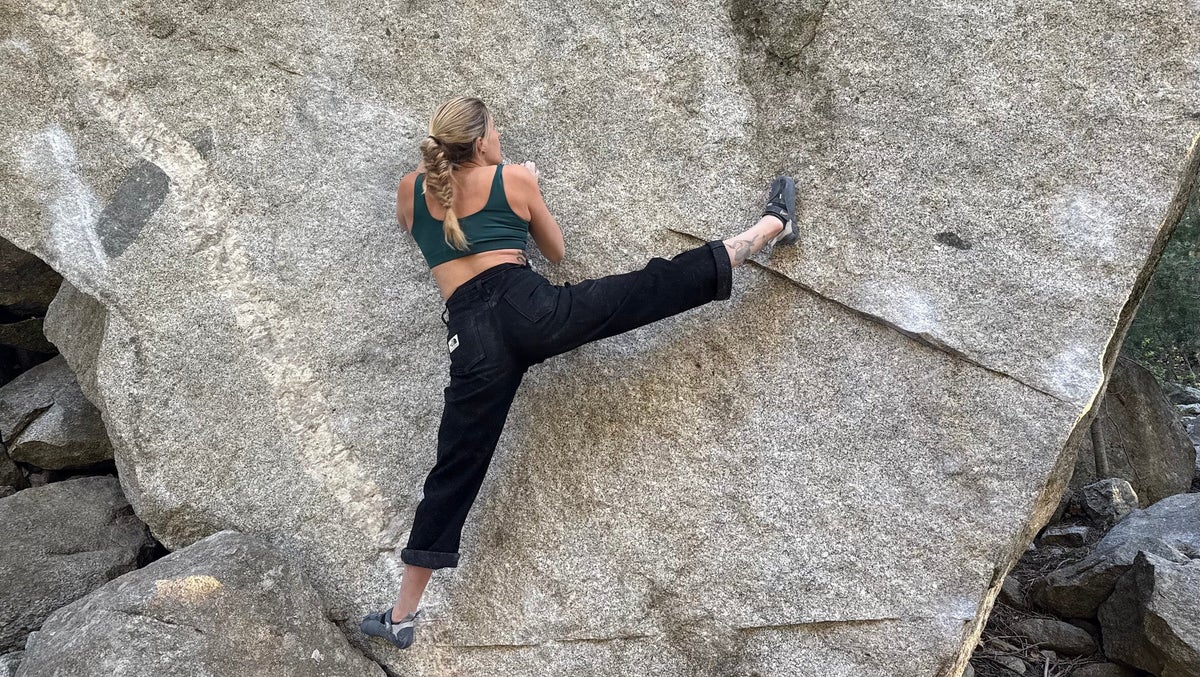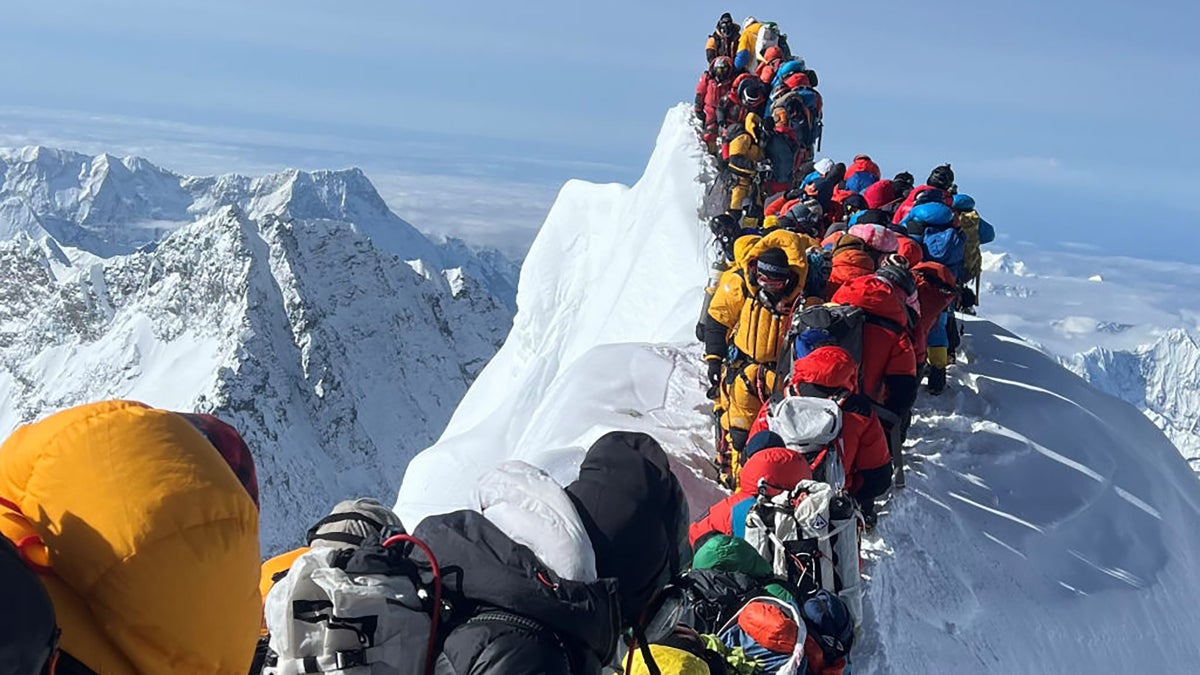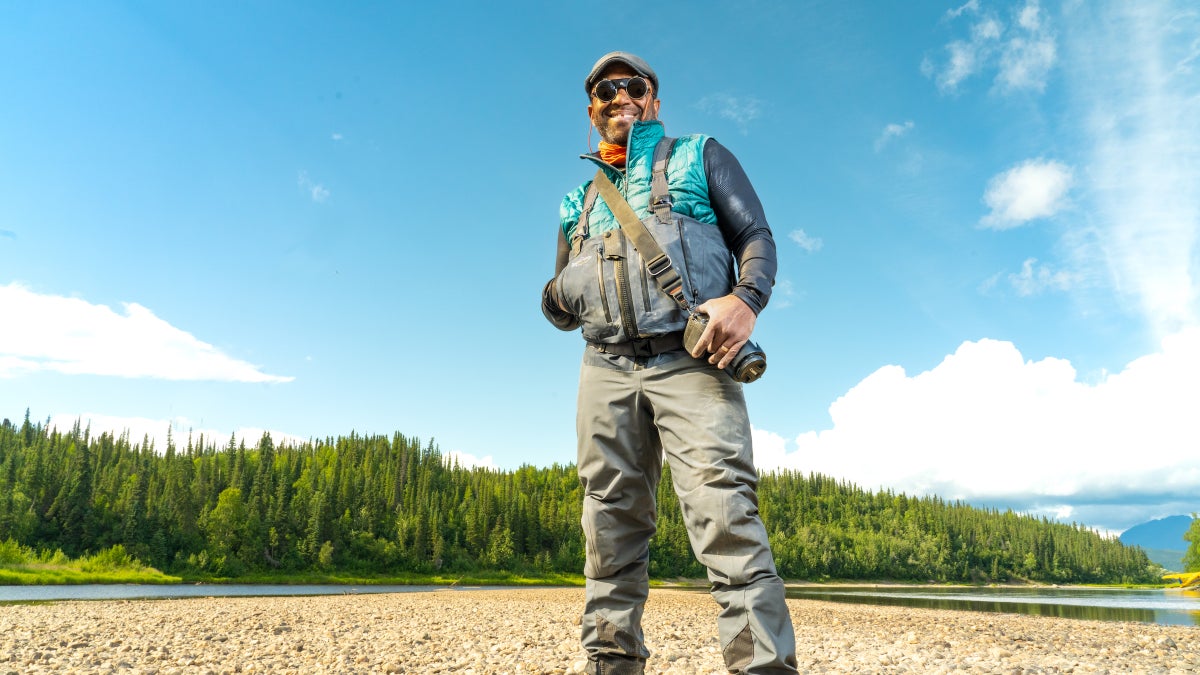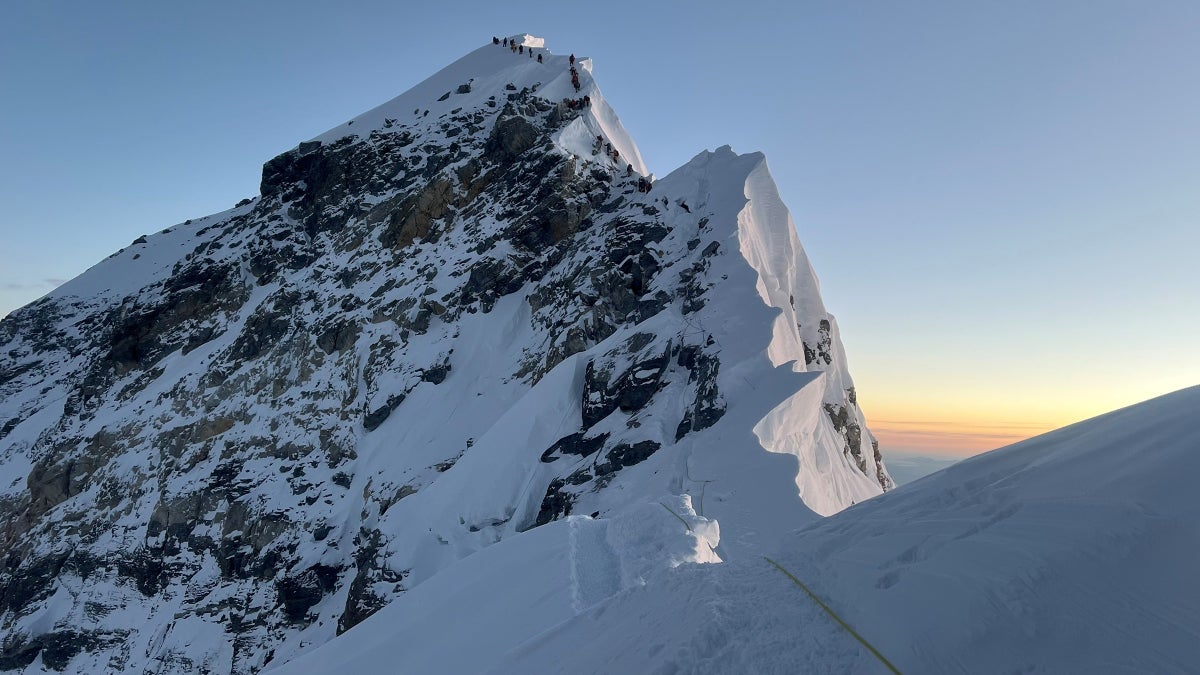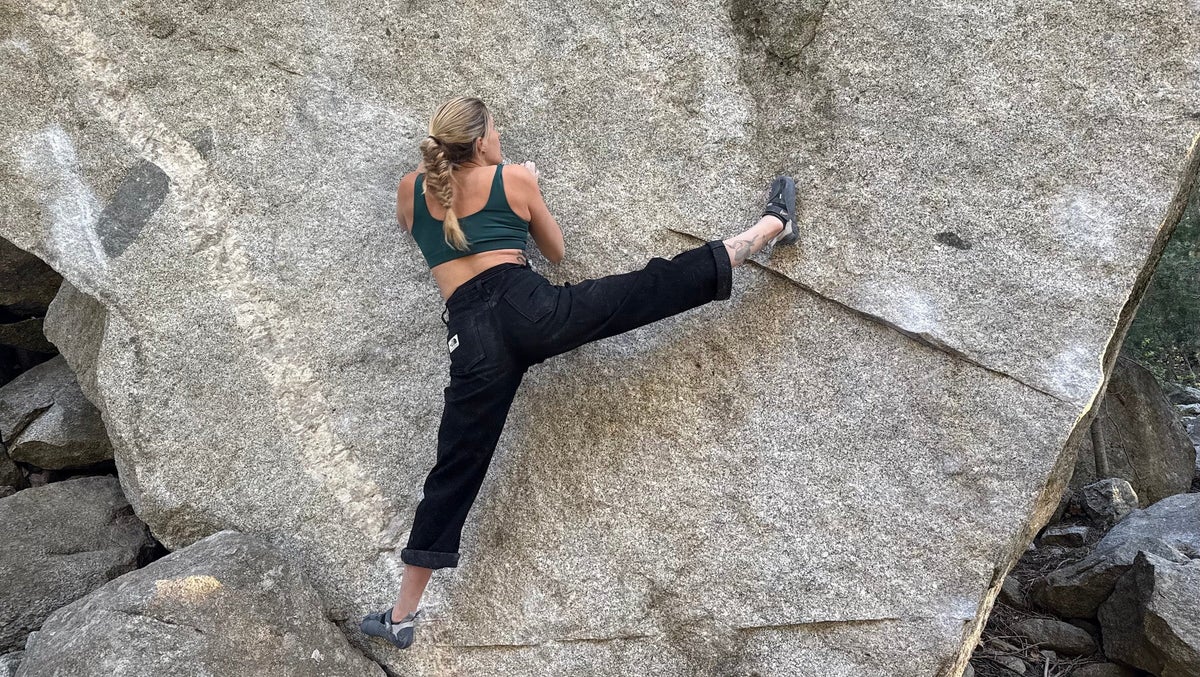
For Canadian professional climber Allison Vest, objects of obsession aren’t exclusively found within the realm of rock. She finds them in quiet moments at home between climbing trips, sitting at her sewing machine and losing track of time making her own clothes. Vest climbs in many of her handmade creations: bolero sets, tailored vintage North Face jeans, a gingham button- up shirt upcycled into shorts, and block-printed pants that she inked for 100 hours.

Vest learned to sew from her grandmother, who taught her how to work a sewing machine when she was a teenager. Now, mornings pass into nights as Vest emerges bleary-eyed from sewing sessions that often last longer than her bouldering sessions. It’s become a bit of an occupational hazard, as well. Vest recently noticed that after she’d hunch over her sewing desk with her head down for hours, a thumb tendon injury she got last year would flare up. Her physical therapist connected her neck position all the way to her worsening tendon injury—it was a full nervous system issue. To alleviate it, Vest had to start setting alarms to take breaks and raise her tools.
But to her, the craft of sewing is worth a little risk. Vest loves the hobby’s flow state, creativity, goal-setting, and embrace of imperfection. Sewing taps into some of the same states of mind that have led to her success in climbing. Vest is the first Canadian woman to boulder V13, she sent Show Your Scars (V14) in 2022, and she’s won multiple national titles in bouldering and lead climbing.
Vest sat down with Climbing to share her tips on getting started in sewing, exploring upcycling, and making climbing pants. Here’s Vest’s story, in her own words.
A Common Thread Between Climbing and Sewing: Projects
I tend to have a little bit of an obsessive personality about projects. I’m always trying to think about the next day or the next session. It’s nice to have something else to obsess over when I sew, so I can stop thinking about climbing. It’s a similar vibe: there’s a process, you have to go through the process, and you have to find enjoyment in the little bits and pieces of the process, because it’s a lot of trial and error.
For example, with a pair of pants I made, I worked on them for seven or eight months. I had to make all these different iterations of them and they weren’t working. I had to try something new, switch this and that, take some measurements out of the waist, add space in the hips. I think that’s similar to climbing, too. When you’re trying to figure out the beta for a boulder, it’s just trial and error. You try one thing, it doesn’t work. You try something else. And then you slowly figure out what the best way is.
All the little bits and pieces eventually add up to sending the boulder, or the end result. In a similar way, it’s important to be focused on the process.

Getting Started Without Getting “Sewverwhelmed”
I’m potentially skewed, because I did have some very basic sewing skills from when I was a kid. But to start, it’s always helpful to have a small goal or something to work on. You could try to practice sewing skills and learn super simple stitches or seams, but I usually decide I want to make something, and then I go backwards and figure out how it’s done.
I look up YouTube videos and figure out what the process is to make that thing. If you do that, you end up being a lot more inspired and driven to finish it. Back when I was starting, I relied heavily on YouTube tutorials that would show you exactly how to sew a pattern [a clothing template, with pieces to guide fabric cutting], exactly how to do a hem—exactly how to do every single step. A lot of the high-level pattern makers will make detailed, helpful YouTube videos to sew along to.
There’s a climber in California named Jess Capalbo, for example, who was really helpful for me. She’s helped create a couple of climbing pant patterns. Social media has so many problems in terms of toxicity, but one thing it’s really great for is getting fast, easy information. So I’ve found a couple people on Instagram that’ll give you sewing tips or tricks, and then people like Jess, who release really cool, high-quality patterns that come with full, detailed YouTube tutorials.
Starting out, you have to let go of trying to make everything perfect. I’m a perfectionist, so I’m always trying to make things exactly perfect. But at the end of the day, things that are handmade are handmade. As a tailor or seamstress, you get to a point where it’s high level and everything is exactly perfect, but when you’re first starting out or trying to get better, that is not the case.

Climbing Pants: a Sewist’s Dilemma
I’ve always been inspired by the outfits that people wear more in dance than in climbing. It feels a lot more feminine, but also interesting in the way that movement looks on the wall, which obviously in dance is important. That’s the point: that the movement looks a certain way. Whereas in climbing, you don’t necessarily get points for aesthetics. When you’re climbing, it’s just about getting to the top. But I do think it’s interesting, the way that dancers dress to enhance the way movement looks, but also to make sure they have the full range of motion.
A lot of the trendy climbing pants don’t give you that full range of motion. The heavy-duty, canvas vibe of pant that is super common, I find a little restrictive sometimes. I think climbing has moved into a very interesting fashion niche. It feels a little bit like skate culture right now. I’m not a skateboarder—so skateboarders don’t come at me—but there’s a higher mobility requirement for climbing, just in terms of the positions you put your body in. That is an interesting dilemma in terms of creating clothing.
People always say: you look good, you climb good. People want to look good when they’re climbing, but at the same time, you don’t want to be restricted by your clothes in the pursuit of looking good. The goal with the bolero set was to have something that looks super fashionable and cute, but can also allow a full range of motion. I’ve liked playing with different fabrics.
How I Like My Bouldering Pants
As far as athletic pants go, there are a lot of brands out there that I really like, but things circulate pretty quickly. There are all these North Face pants from a year or so ago that I like, so I’ve liked being able to measure those pants, make my own pattern, and try to recreate them.
I definitely like the baggier, oversized look, but I also want them to fit well on my waist, hips, and butt. I don’t want it to be so baggy that there’s no shape to it. So I guess baggy with some shape is what I’m going for right now. I try to keep the pocket styles simple. Climbing—and bouldering in particular—with things in your pockets is sort of dangerous. When I’m bouldering, I don’t have anything in my pocket, so I usually undercook the pockets. I used to really like a cinched ankle, and I’ve done that a little bit, but now I like an open, loose ankle. They sit a little bit higher above the ankle bone, so you’re not stepping on them.
One of the biggest superpowers of sewing is: No sizing is ever going to be perfect. You can only make so many sizes as a brand. So what’s been nice is having the power to make things that fit my body specifically. People are going to always have different opinions or preferences about the way that apparel fits. I also like buying slightly bigger sizes and then taking things in at the waist. I’m not 100% sure of the science behind why that’s exactly what I like, but that’s been my best go-to—getting things that fit a little big and taking them in at the waist.

The Added Appeal of Upcycling
It’s really cool to see brands moving toward circular, sustainable practices. The North Face is really pushing for that. They have a few circular clothing projects. They also have a renewed and remade site on their website, where they take things from people with holes in them, fix them, and resell them. That’s one of the reasons I got into sewing, just because I think upcycling is really cool. I watched a documentary on HBO about clothing waste, where even when you donate clothing to a thrift store, most of it ends up getting shipped to Africa and into these massive piles of fast fashion clothing dumps.
To find and use fabric from other things rather than buying fabric new, I peruse thrift stores. I really like using stuff with an interesting pattern. I’ve made two bolero sets with old North Face hoodies. I got The North Face part on eBay, because that’s the attention grabber of the outfit—something that has a cool pattern or a cool color. But one sweatshirt is usually not enough to make a full set with pants. I’m always shocked at how much material pants take to make.
Then I’ll go to the thrift store and try to color match with that one piece, using maybe one or two other sweatshirts to make the full outfit. I like intentionally sourcing one thing from somewhere that is eye-catching for one reason or another. All of the extra material I need, I usually get from our local Savers.
A Final Thought for Sewing-Curious Climbers
It’s just really fun. I hope more people will do it. It’s a super good side gig to climbing.
The post Pro Climber Allison Vest Thinks Climbing Pants Can Be Better. So She Makes Her Own. appeared first on Outside Online.

